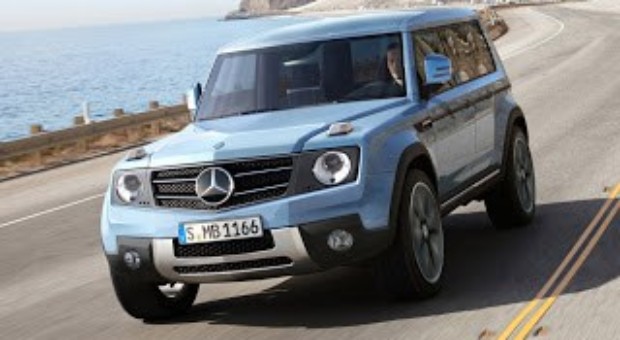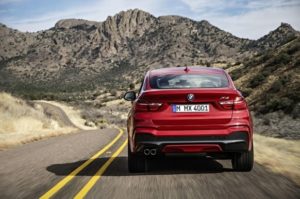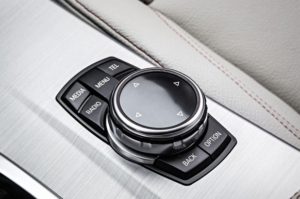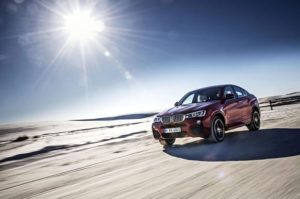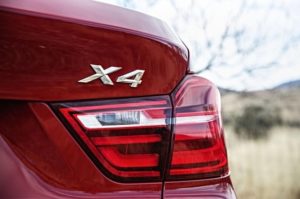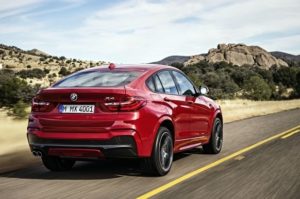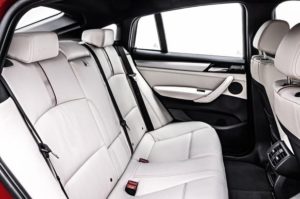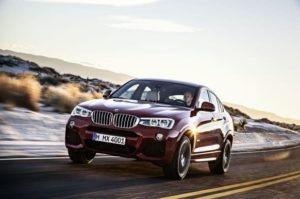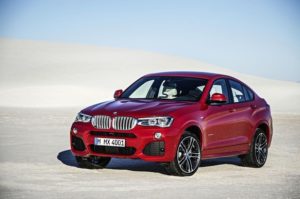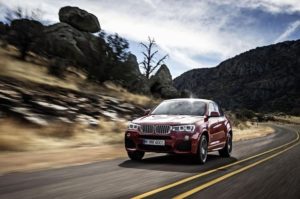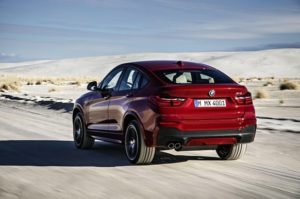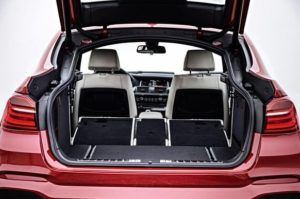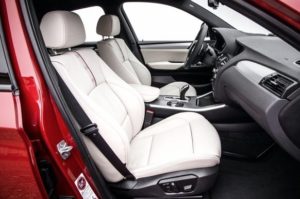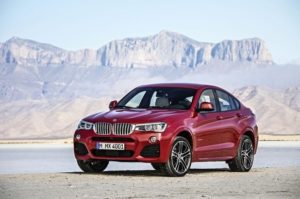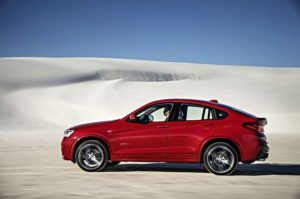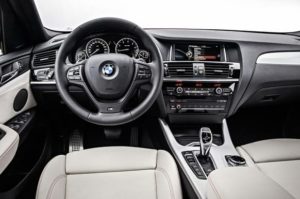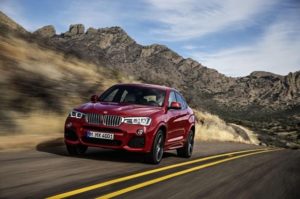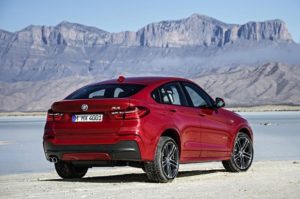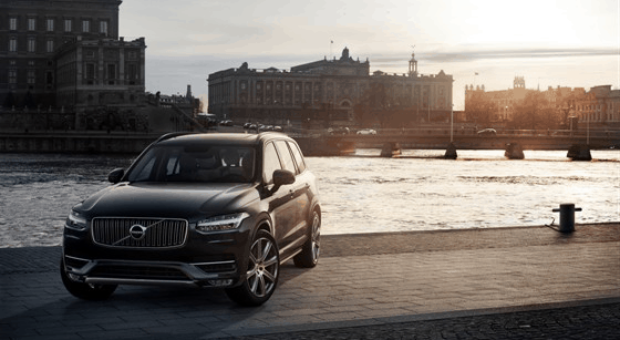
Search for: "Category Archives: SUV"

Discover all-new 2014 BMW X4
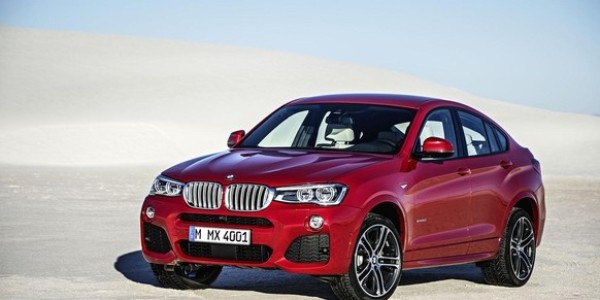
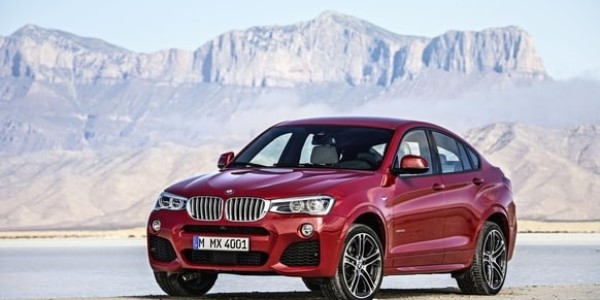
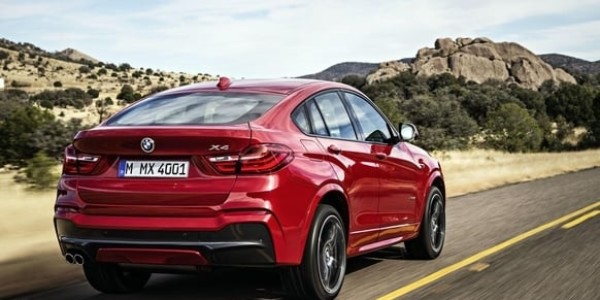
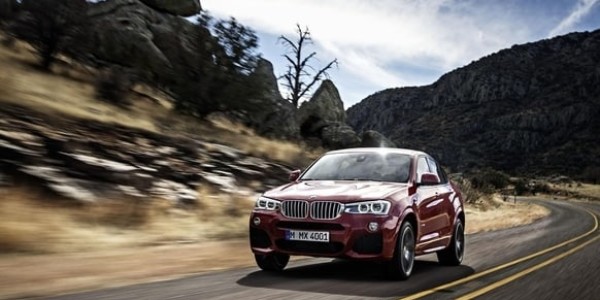
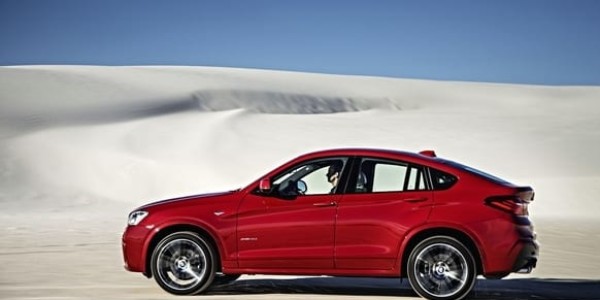
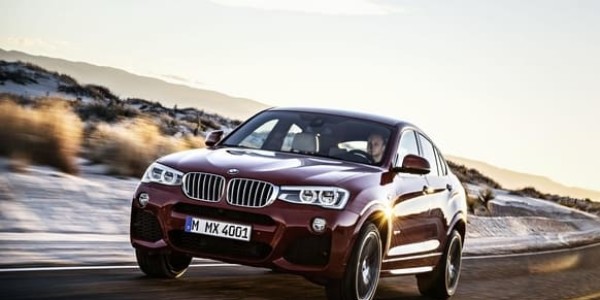
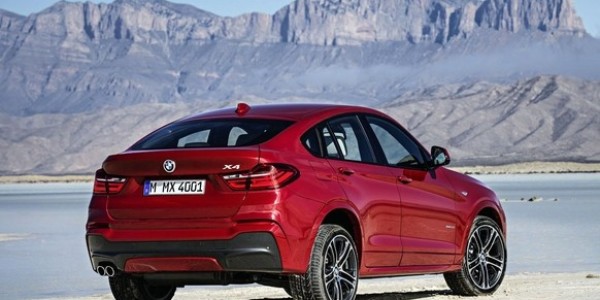
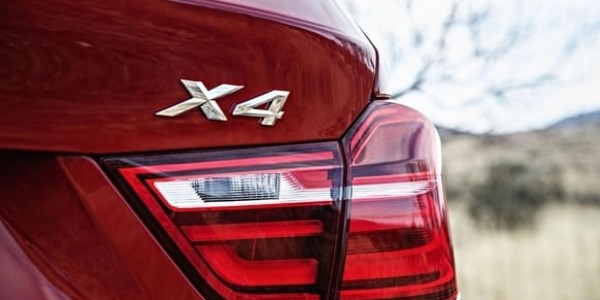
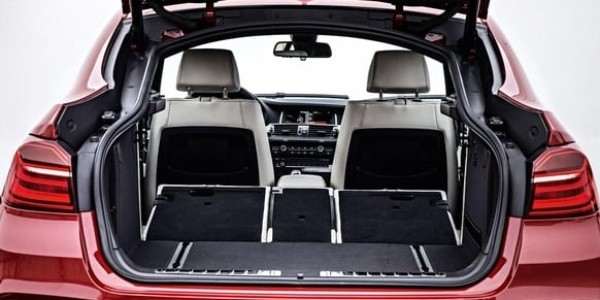
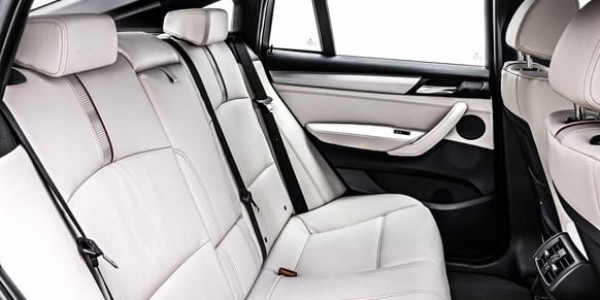
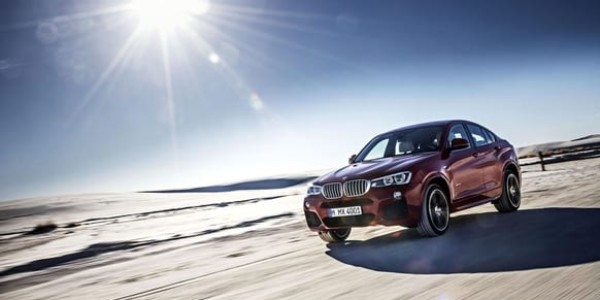
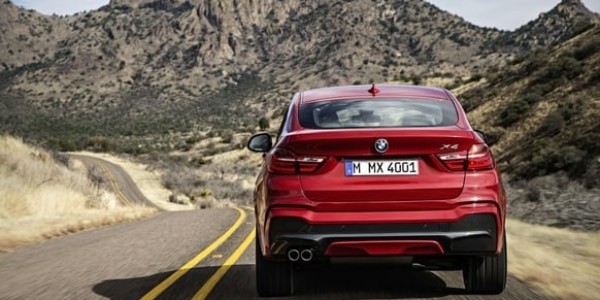
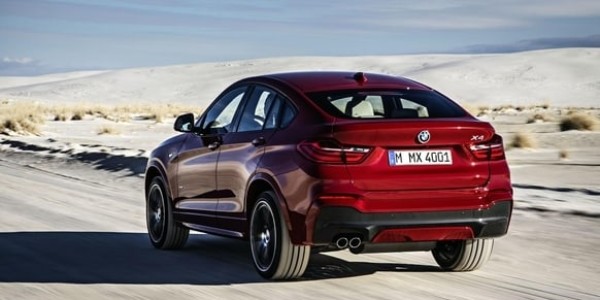
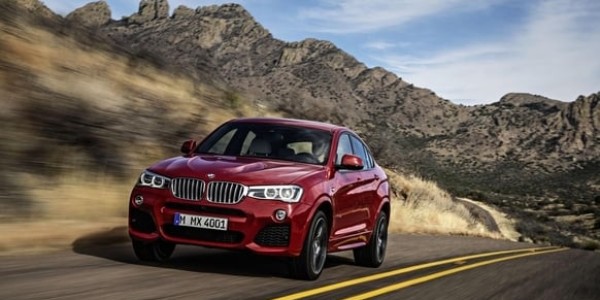
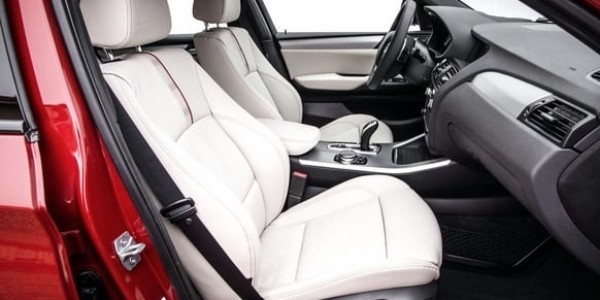
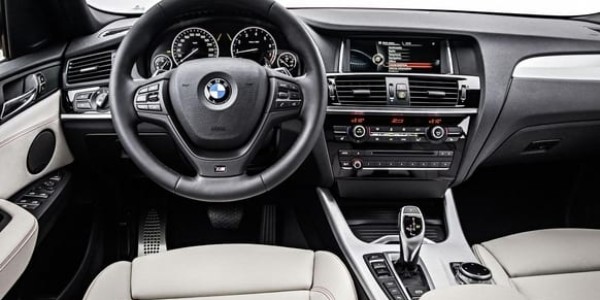
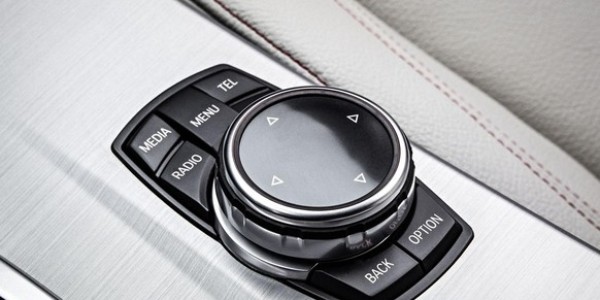
Discover all-new 2014 BMW X4
The new BMW X4 is based on the technical blueprint of the BMW X3, but displays a sporting character very much its own and takes dynamics to another new level. That much is clear when you view the new model head-on. The look & feel is similar with BMW X6
The large air intakes positioned on the outer edges of the front end and the character lines in the front apron allow the BMW X4 – with its signature BMW twin headlights and front fog lamps (both optionally with LED technology) – to maximise its visual presence on the road. The roofline reaches its highest point above the driver and then swoops down smoothly to the trailing edge of the tailgate, mimicking the design language of a classical sporting coupe. The signature swage line running along the flanks of BMW models is split into two on the X4.
The new BMW X4 (fuel consumption combined: 8.3–5.0* l/100 km [34.0–54.3 mpg imp]; CO2 emissions combined: 193–130* g/km) blends the hallmark features of the successful BMW X family with the sporting elegance of a classical coupe, and introduces the unique Sports Activity Coupe concept to the premium mid-size segment.
Its dynamic pedigree is underlined by a wide range of cutting-edge high-performance engines, the xDrive all-wheel-drive system and an exclusive spread of standard equipment features such as variable sport steering, Performance Control and a sports leather steering wheel with gearshift paddles.
In keeping with the vivacious character of the new BMW X4, customers can choose from three petrol engines and a trio of diesel units from the BMW EfficientDynamics engine family, whose output ranges from 135 kW/184 hp to 230 kW/313 hp. All the engines meet the EU6 exhaust gas standard.
The BMW TwinPower Turbo technology of the state-of-the-art engines offers a promise of superb performance married with exceptionally low fuel consumption. For example, the flagship petrol unit in the BMW X4 xDrive35i (fuel consumption urban/extra-urban/combined: 10.7/6.9/8.3 l/100 km [26.4/40.9/34.0 mpg imp]; CO2 emissions combined: 193 g/km) develops an outstanding 225 kW/306 hp and peak torque of 400 Nm (295 lb-ft). The BMW X4 xDrive35i requires just 5.5 seconds to sprint from 0 to 100 km/h (62 mph).
And an equally impressive performer in terms of power delivery and CO2 efficiency is the BMW X4 xDrive35d (fuel consumption urban/extra-urban/combined: 6.7/5.5/6.0 l/100 km [42.2/51.4/47.1 mpg imp]; CO2 emissions combined: 157 g/km). Its 3.0-litre six-cylinder in-line engine generates 230 kW/313 hp and peak torque of 630 Nm (465 lb-ft).
The BMW X4 xDrive35d accelerates from 0 to 100 km/h (62 mph) in 5.2 seconds. The new-generation 2.0-litre diesel engine in the BMW X4 xDrive20d (fuel consumption urban/extra-urban/combined: 5.8–5.4*/5.1–4.8*/5.4–5.0* l/100 km [48.7–52.3/55.4–58.9/52.3–56.5 mpg imp]; CO2 emissions combined: 141–131* g/km) with eight-speed Steptronic transmission also sets the benchmark when it comes to fuel economy and CO2 emissions. Its four-cylinder unit produces 140 kW/190 hp and peak torque of 400 Nm (295 lb-ft).
The new BMW X4 Media Gallery
2014 BMW X4 | Source BMW, please read more.
FORD Ranger – Ford Ranger & Ford Ranger XLT
FORD Ranger – Ford Ranger & Ford Ranger XLT
The Ford Ranger, code named T6, was unveiled at the Australian International Motor Show in Sydney. The T6 replaces two regional Ranger platforms: the Mazda BT-50-derived model sold in the Latin America, Europe, and Asia-Pacific regions and the North American model sold in select Latin American markets.
Although the T6 Ranger will be offered in 180 markets globally, it is not currently planned to be sold in the United States or Canada, due to the new platform being too close in size and cost to the F-150, and due to overall declining sales of compact pickups in North America. However it is offered in the United Arab Emirates along side the F-150 and Super Duty.
Ford initially planned a mid-size truck based on a modified F-150 chassis for the North American market named the F-100; however, this was shelved in favour of offering the 3.5L EcoBoost V6 engine on the F-150. Additionally, American and Canadian safety and emissions standards as well as the long-standing 25% import tariff imposed on non-American built light trucks prevent the T6 Ranger from being imported into North America. Likewise, safety and emissions standards in ECE-compliant nations, the need for right-hand drive in certain international markets, and the physical size of the F-150 prevent it from being globalised.
Production is expected to commence in summer 2011, starting with Thailand’s Rayong plant, with production in South Africa and Argentina to follow.[6] Additionally, Mazda will build a badge-engineered version of the T6 as the second generation BT-50.
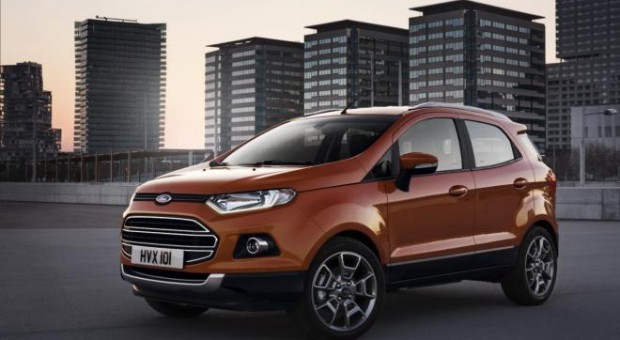
2013 All-New Ford EcoSport Revealed
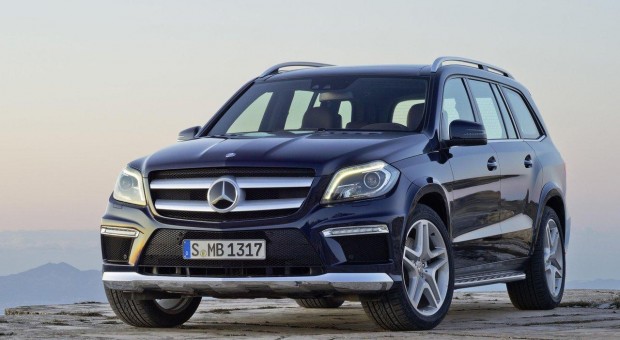
2013 All-new Mercedes Benz GL
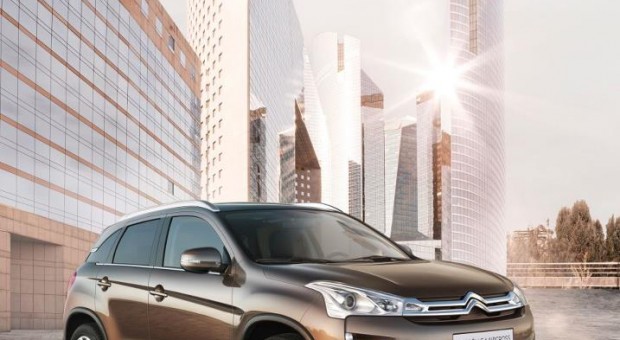
Citroen C4 Aircross Compact SUV
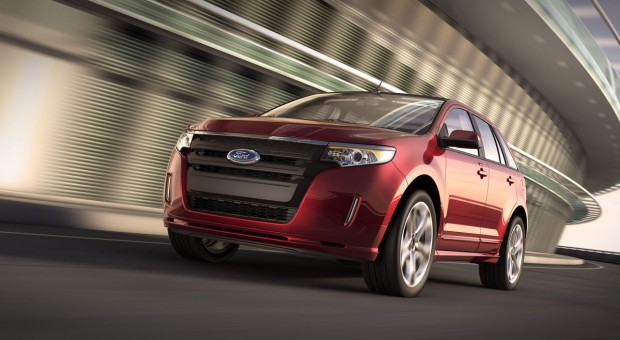
2013 Ford Edge
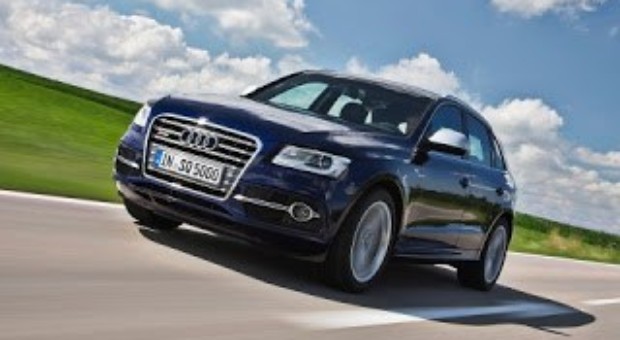
2014 Audi SQ5
